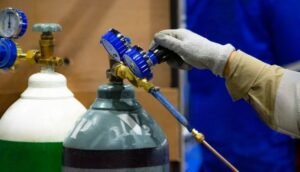Introduction to Mithila Paints
Distinct from conventional paints, Mithila paints are made using natural materials, such as vegetable dyes, clay, and other organic substances. This commitment to environmentally friendly practices sets them apart in the paint manufacturing industry, where synthetic compounds often dominate. Mithila paints exhibit unique characteristics, including excellent adhesion and durability, making them an ideal choice for various surfaces. Their eco-friendly composition not only minimizes environmental impact but also promotes the health and safety of artisans working with these materials.
The cultural significance of Mithila paints extends beyond mere aesthetics; these paints embody traditions that reflect the values, beliefs, and narratives of the Mithila community. The art form has been passed down through generations, allowing craftsmen to blend traditional techniques with contemporary innovations. This fusion is evident in the increased use of Mithila designs in modern home decor and architecture, thus broadening their application and appeal. In recent years, the incorporation of Mithila paints into modern paint manufacturing aligns with a growing trend towards sustainable practices in the industry, allowing for the preservation of cultural heritage while meeting current market demands.
Understanding Curing Agents in Paint Manufacturing
Curing agents are crucial components in the paint manufacturing process, serving as catalysts that enable coatings to achieve their specified properties. These agents typically work to facilitate chemical reactions that lead to the curing or hardening of paint, ensuring that the final product displays the desired performance characteristics such as durability, adhesion, and resistance to environmental factors. Without these agents, paint would remain in a liquid state, rendering it ineffective for practical applications.
The chemistry underlying curing agents is rooted in their ability to interact with the resin components found in paints. When a paint is applied, the curing agent reacts with the resin as it begins to evaporate solvents or lose water, initiating a series of cross-linking reactions within the polymer matrix. This process enhances the mechanical strength of the paint film, resulting in improved adhesion to surfaces and increased resistance to wear and tear. It is important to note that curing agents vary between water-based and solvent-based paints, with different formulations tailored to each system’s unique chemistry and environmental requirements.
In water-based paints, for instance, curing agents help to stabilize the paint during the drying process by accelerating the evaporation of water and promoting the formation of a robust film. In contrast, solvent-based paints rely on organic solvents to facilitate the curing process, necessitating curing agents that can effectively promote the desired chemical reactions in a different medium. Overall, the role of curing agents is indispensable in paint manufacturing, as they not only enhance the performance of the paint but also contribute to its longevity and resistance to external factors, thereby ensuring a quality finish that meets consumer expectations.

How Mithila Paints Function as Curing Agents
Mithila paints, renowned for their vibrant designs and traditional craftsmanship, possess unique properties that enable them to function effectively as curing agents in the paint manufacturing industry. The primary components used in Mithila paints include natural plant dyes, mineral pigments, and binding agents such as gum or resin from local trees. These materials not only provide colorful aesthetics but also contribute to the paints’ curing capabilities, impacting their performance and durability.
The natural plant dyes present in Mithila paints are derived from sources like indigo, madder root, and turmeric. These organic materials are not only sustainable but also help in ensuring that the paints cure efficiently over time. When Mithila paints are applied, the natural components undergo a chemical transformation as they dry, effectively creating a hard film that enhances adhesion to surfaces, reduces the risk of peeling, and promotes longevity. This makes Mithila paints particularly suitable for use on various substrates.
Moreover, the mineral pigments used in these paints are critical for UV stabilization. They shield the colors from fading when exposed to sunlight, which further enhances the paint’s lifespan and aesthetic appeal. The specific formulation of these pigments helps in achieving a uniform finish that is known for its gloss and depth. This rich finish is not only visually appealing but also contributes to the overall stability of the cured paint layer.
Additionally, the use of traditional binding agents in Mithila paints serves a dual purpose. These agents not only secure the pigments and dyes but also aid in moisture retention during the curing process. This moisture retention is essential as it allows the paint layer to cure evenly, reducing the likelihood of imperfections such as cracks or uneven textures. Thus, Mithila paints effectively embody the principles necessary for a curing agent, showcasing attributes that enhance performance, finish, and longevity in various applications.
Sustainability Aspects of Mithila Paints
Mithila paints, deeply rooted in the cultural heritage of the Mithila region in India, offer significant environmental advantages that align with the contemporary trend toward sustainability in the paint manufacturing industry. As these traditional paints are predominantly composed of natural ingredients, their integration into paint production presents an eco-friendly alternative to conventional synthetic paints. The use of natural pigments sourced from plants, minerals, and other organic materials contributes to a lower carbon footprint, making Mithila paints a desirable option for environmentally conscious consumers and manufacturers alike.
One of the most compelling benefits of Mithila paints is their contribution to reducing volatile organic compound (VOC) emissions. Traditional paints often contain high levels of VOCs, which can evaporate during application and lead to harmful air pollution and indoor health issues. In contrast, Mithila paints are characterized by their low VOC content, ensuring healthier indoor air quality and a reduced environmental impact throughout their lifecycle. By using these organic paints as curing agents, the paint manufacturing industry can not only promote better health outcomes but also adhere to stricter environmental regulations aimed at minimizing harmful emissions.
Moreover, the biodegradability of Mithila paints underscores their sustainability credentials. Unlike synthetic paints, which can persist in the environment for extended periods, the natural components of Mithila paints break down more readily. This characteristic significantly reduces their ecological footprint upon disposal, contributing to a decrease in long-term environmental pollution. As consumer demand for environmentally responsible products continues to rise, the incorporation of Mithila paints within the paint sector not only supports sustainable practices but also reflects a broader commitment to ecological preservation.
In summary, the sustainability aspects of Mithila paints, through their natural composition, low VOC emissions, and biodegradability, reinforce the growing shift toward eco-friendly solutions in the paint manufacturing industry.
Case Studies: Successful Applications of Mithila Paints as Curing Agents
Mithila paintings, renowned for their intricate designs and vibrant colors, have transcended traditional artistry to become an innovative element within the paint manufacturing sector. Several case studies highlight the effective application of Mithila paints as curing agents in diverse environments, demonstrating their practical benefits and potential challenges.
One notable case study involved a collaborative project between a local paint manufacturer and Mithila artists in Bihar, India. The integration of Mithila paints was tested on eco-friendly exterior house paints. The primary goal was to enhance the durability and aesthetic appeal of the final product. The resulting paints not only exhibited improved resistance to UV radiation but also retained their vivid colors significantly longer than standard formulations. Feedback from consumers indicated a high satisfaction level regarding both the visual appeal and longevity of the painted surfaces.
Another real-world implementation occurred within the automotive sector, where Mithila paints were investigated as curing agents for protective coatings on car bodies. This initiative aimed to provide a unique aesthetic while ensuring that protective qualities were not compromised. The study revealed that the addition of Mithila pigments contributed to increased weather resistance and reduced corrosion. However, challenges were noted in the consistency of pigment dispersion during manufacturing, highlighting the need for advancements in formulation techniques.
A further example includes the use of Mithila paints in decorative home furnishings. A collaborative effort between artisans and designers led to the development of a specialized line of furniture paints. These paints, infused with Mithila motifs, not only served aesthetic purposes but also demonstrated enhanced adhesion and quality. This initiative showcased how traditional art forms could be reimagined to meet modern demands in the paint industry.
These case studies emphasize the versatility and performance of Mithila paints as curing agents across various applications, illustrating both the innovative potential and the challenges that accompany integrating traditional art into contemporary paint technologies. As research progresses, the future of Mithila paints in the paint manufacturing industry looks promising, suggesting numerous avenues for further exploration and application.

Comparative Analysis: Mithila Paints vs. Conventional Curing Agents
The use of Mithila paints as curing agents in the paint manufacturing industry presents a noteworthy alternative to conventional curing methods. One of the most significant advantages of Mithila paints lies in their environmental sustainability. Unlike traditional curing agents that can often contain harmful chemicals, Mithila paints are derived from natural sources and carry a much lower ecological footprint. This aspect appeals to consumers who are increasingly aware of environmental issues, thus impacting overall consumer preference.
When comparing performance, Mithila paints offer unique properties that can enhance the paint’s aesthetic appeal while maintaining durability. Conventional curing agents often demonstrate superior curing speed and durability due to their chemical formulations. However, the cultural and artistic significance of Mithila paints adds value that transcends mere functionality for many users. The manual application of these paints, which involves intricate artistry, can also contribute to higher perceived value among consumers.
Cost-effectiveness is another crucial factor in the comparative analysis. While conventional curing agents may initially appear to be more economical due to their widespread availability and mass production, this does not account for the increasing costs associated with environmentally damaging practices and health implications. Mithila paints may have a higher upfront cost, but their long-term benefits, such as improved indoor air quality and sustainability, may offset these initial expenses.
However, it is essential to acknowledge the limitations of Mithila paints. Their variability in quality due to manual production methods may pose challenges in maintaining consistent performance when compared to standardized conventional curing agents. Additionally, further research and technological innovation are necessary to enhance the efficiency and scalability of Mithila paints in commercial applications. Addressing these concerns could allow Mithila paints to emerge as a formidable competitor in the paint manufacturing industry.
Future Prospects and Innovation in Mithila Paints
The emergence of Mithila paints in the paint manufacturing industry presents a promising avenue for innovation and sustainability. These traditional paints, rooted in the rich cultural heritage of Mithila, are gaining traction due to their eco-friendly composition and aesthetic appeal. As global awareness of environmental issues continues to rise, Mithila paints can position themselves favorably by emphasizing their organic materials and non-toxic properties, which are increasingly sought after by consumers concerned with health and environmental impacts.
Technological advancements in formulation and application techniques present significant opportunities for the evolution of Mithila paints. Innovations such as the development of water-based formulations or the incorporation of modern additives can enhance performance while retaining the unique characteristics associated with traditional styles. For instance, enhancing durability, improving coverage, and ensuring faster drying times could broaden their application across various sectors, including residential, commercial, and even industrial settings.
Furthermore, the integration of digital technologies into the production and marketing of Mithila paints opens up new horizons. Utilizing social media platforms and e-commerce strategies can significantly enhance market reach and consumer engagement. Collaborations with contemporary artists can also help rejuvenate interest in Mithila art, translating traditional designs into contemporary color palettes that appeal to modern consumers.
However, these advancements come with challenges that must be addressed to facilitate broader application. Issues such as scalability of production, ensuring consistent quality across batches, and overcoming consumer misconceptions about traditional products require attention. Moreover, it is crucial to nurture skilled artisans who can blend traditional techniques with modern innovations. Only by addressing these challenges effectively can Mithila paints truly shine in the paint manufacturing industry, cementing their role as not only artistic expressions but also practical solutions for contemporary painting needs.
Expert Opinions: Insights from Industry Professionals
The intersection of traditional art and modern technology is often highlighted in discussions regarding Mithila paints and their role in the paint manufacturing industry. Experts from various fields offer valuable perspectives on the significance of Mithila paints, particularly in terms of their properties and functional benefits as curing agents.
According to Dr. Ava Sharma, a chemist specializing in paint formulations, “The natural ingredients found in Mithila paints, such as vegetable dyes and mineral compounds, present unique curing characteristics that enhance paint adhesion and durability.” This perspective underscores the advantages of incorporating Mithila paints into contemporary paint products, thereby bridging the gap between traditional methodologies and modern scientific applications.
Furthermore, Rajeev Kumar, a paint manufacturer with over two decades of experience, states, “We are continuously exploring sustainable options for our formulations. Mithila paints not only provide aesthetic value but also contribute to a more environmentally friendly production process.” His insights reveal a growing trend in the industry towards utilizing traditional materials to meet the demands of sustainability while maintaining high-quality standards.
Moreover, cultural historian Anita Mishra emphasizes the broader implications of this integration. “Mithila art carries centuries of cultural significance. By utilizing Mithila paints, manufacturers not only enhance their product’s performance but also help preserve an important aspect of our heritage,” she asserts. This perspective draws attention to the cultural and social responsibilities of the paint manufacturing industry in promoting traditional art forms while appealing to modern consumers.
Through these expert insights, it becomes clear that Mithila paints serve a dual purpose. They offer functional benefits as curing agents while simultaneously contributing to the preservation of cultural heritage. The paint manufacturing industry stands at the threshold of a significant transformation, blending traditional knowledge with technological advancements.
Conclusion and Recommendations
In examining the role of Mithila paints as curing agents in the paint manufacturing industry, it is evident that these traditional artistic materials possess unique properties that could greatly benefit modern manufacturing processes. As highlighted throughout the discussion, Mithila paints are not only vibrant and aesthetically pleasing but also yield practical advantages in terms of durability and sustainability. The incorporation of these paints as curing agents presents a compelling alternative to conventional methods, aligning with the industry’s growing emphasis on eco-friendly practices.
The effectiveness of Mithila paints in enhancing product performance cannot be overlooked. Their natural composition may reduce the reliance on synthetic additives, thereby decreasing potential environmental impacts. Moreover, utilizing culturally rich materials like Mithila paints can foster a sense of identity and craftsmanship within the paint manufacturing sector, promoting a blend of tradition and innovation that can differentiate products in a competitive market.
Manufacturers considering the adoption of Mithila paints are encouraged to engage in thorough testing to assess compatibility with existing formulations and processes. Collaboration with artisans who specialize in Mithila painting can also provide valuable insights into the proper application and potential benefits of these paints. Furthermore, targeted training should be provided to industry professionals to maximize the effective use of Mithila paints as curing agents.
Moving forward, it is crucial to advocate for further research and development in this area. Investigating the various properties of Mithila paints and their interactions with different substrates can unlock new possibilities within the paint manufacturing industry. By establishing a robust body of knowledge around Mithila paints, manufacturers will be better equipped to leverage their benefits while contributing to the preservation of this culturally significant art form.

